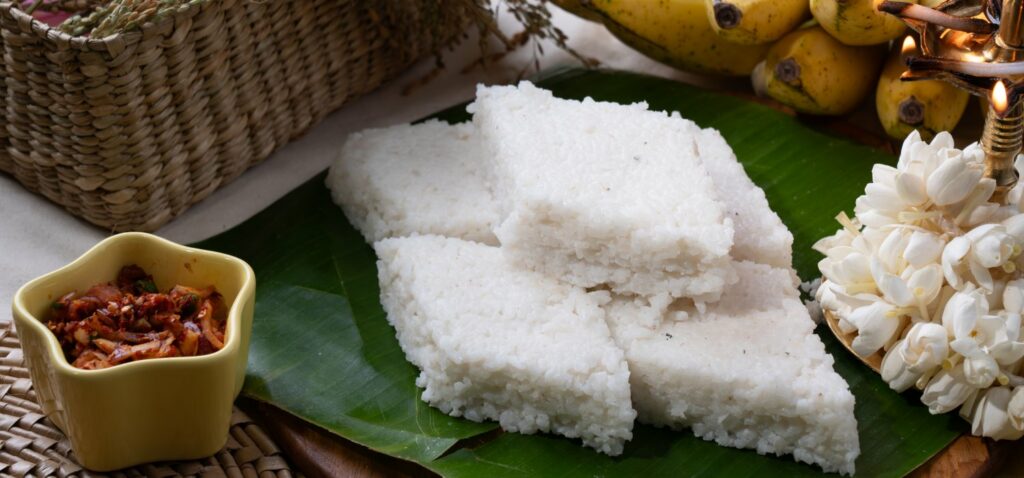The Traditional Delight of Milk Rice in Sri Lanka

In this article, we explore milk rice, a beloved traditional dish in Sri Lanka. Known as ‘kiribath’, it is celebrated for its rich flavor and cultural significance. We’ll discuss what it is, its origins, how it is made, where to enjoy it, and its role in Sri Lankan festivals.
Table of Contents
ToggleWhat is Milk Rice and Why is it Important?
Milk rice, known locally as ‘kiribath’, is a simple yet delicious dish made primarily from rice and coconut milk. It is often enjoyed for breakfast or during special occasions. The dish is characterized by its creamy texture and subtle sweetness, making it a favorite among locals and visitors alike.
In Sri Lankan culture, kiribath holds great significance. Traditionally, it is often served during auspicious ceremonies, weddings, and the Sinhala and Tamil New Year. This importance stems from its symbolism of prosperity and new beginnings, making it a staple in celebratory meals. As a dish that brings families together, it plays a central role in many gatherings and festivities.
How is Milk Rice Made?
Making milk rice is a straightforward process that requires minimal ingredients. The primary ingredients include short-grain rice and fresh coconut milk. First, the rice is soaked for a few hours to enhance its texture. Once prepared, the rice is cooked with coconut milk in a pot, creating a rich and creamy blend.
After cooking, the rice is typically shaped into a large square or rectangle and cooled. Often, it is served with a variety of accompaniments such as jaggery (a type of unrefined sugar), sambol (a spicy condiment), or even fried fish. This combination adds flavor and elevates the dish, making it a complete meal that reflects the vibrant culinary culture of Sri Lanka.
Where Can You Enjoy Milk Rice in Sri Lanka?
Milk rice is widely available throughout Sri Lanka but is particularly common in rural areas and during festivals. You can find local eateries, known as ‘hotels’, serving freshly made kiribath, especially in the mornings. Markets may also offer homemade versions, where you can see families preparing this dish with love and tradition.
If you are visiting during the Sinhala and Tamil New Year, you are likely to find milk rice being prepared in every household. Festivals in regions like Kandy or Galle also showcase this dish as part of cultural performances, allowing travelers to delve into the rich history of Sri Lankan cuisine.
What Cultural Festivals Feature Milk Rice?
Milk rice is deeply embedded in Sri Lankan culture and is especially significant during the Sinhala and Tamil New Year, celebrated in April. This festival marks the harvest season and is a time for families to come together, share meals, and honor traditions. Kiribath is among the first dishes prepared and symbolizes prosperity for the coming year.
Other cultural events include weddings, where milk rice is served as part of the ceremonial feast, and various religious festivals. During these gatherings, families and friends enjoy this dish alongside a spread of other traditional foods, making it a joyful experience filled with flavors and communal bonding.
Why Should Tourists Try Milk Rice?
For tourists exploring Sri Lanka, trying milk rice is an essential part of understanding the local cuisine and culture. It serves as an authentic representation of the island’s culinary heritage. The simplicity of its ingredients belies the rich traditions behind its preparation and consumption.
Furthermore, savoring kiribath allows travelers to connect with local communities, as food is often a gateway to deeper cultural exchanges. Whether at a bustling market or an intimate home setting during a festival, enjoying milk rice provides an unforgettable taste of Sri Lankan hospitality and love for culinary art.
Conclusion
In summary, milk rice, or kiribath, is more than just a dish in Sri Lanka; it is a symbol of culture and community. Its rich flavor, ease of preparation, and significance during celebrations make it a must-try for anyone visiting the island. By embracing this traditional delight, travelers can experience a deeper connection to the heart of Sri Lankan life.
Frequently Asked Questions (FAQs)
-
- Can milk rice be made with different types of rice? Yes, while short-grain rice is traditional, some people use long-grain or other varieties for a different texture.
-
- Is milk rice suitable for vegetarians? Yes, kiribath is entirely vegetarian as it consists of rice and coconut milk.
-
- How is milk rice served in restaurants? It is usually accompanied by sweet and savory items, such as jaggery, sambol, or fish.
-
- Are there any variations of milk rice? Yes, variations can include different flavorings or side dishes depending on local customs and personal preferences.
-
- Can I find vegan versions of milk rice? Absolutely, kiribath is naturally vegan as it uses coconut milk and rice without any animal products.
All Categories
Recent Posts
How to Obtain an International Driving License in Sri Lanka
Flying from KTM to Sri Lanka: What You Need to Know
Affordable Business Class Flights to Sri Lanka

